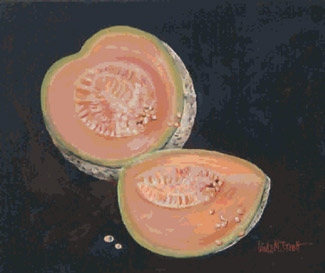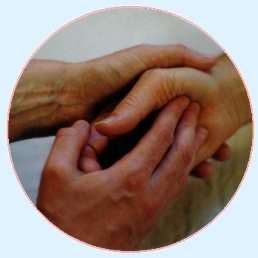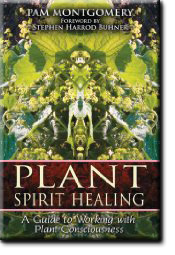Therapeutic Massage and Diabetes 1. 2
by Mary Kathleen Rose
[Clients with this serious disease may often be helped by massage,
if the proper procedures are followed. ]
Safety Concerns
As noted [in part one of this article], changes in blood glucose levels can and do occur when people with diabetes receive massage. These changes may happen, regardless of massage. But because of the relaxing nature of massage, and the somewhat altered state of awareness that can occur, a drop in blood sugar can be difficult to notice. Some diabetics can tell when their sugar level is dropping.
These changes may happen, regardless of massage. But because of the relaxing nature of massage, and the somewhat altered state of awareness that can occur, a drop in blood sugar can be difficult to notice. Some diabetics can tell when their sugar level is dropping.
Others experience what is called hypoglycemic unawareness, in which they are not aware of a serious drop in blood sugar. Even people who usually are aware can occasionally experience hypoglycemic unawareness. Hypoglycemia (low blood sugar) is a serious condition and can lead to unconsciousness and, rarely, death.
Due to the frequent unpredictable nature of the disease, it is important for the massage therapist to recognize the signs and symptoms of hypoglycemia. Any one or more of these symptoms may occur:
Excessive sweating (skin may feel clammy);
Faintness or headache;
Unable to awaken;
Certain spaced-out tendencies--the person may talk or move very slowly, or not be able to speak coherently;
Irritability;
Change in personality;
Rapid heartbeat
The therapist can ask the person how he feels. Does he seem fully cognizant when questioned? If there is any doubt, be prepared to treat the client. Treatment is simple. If blood sugar is low, the diabetic needs sugar fast! This may be in the form of fruit juice, honey, a sugary drink or glucose tablets, if you have access to them. (Many diabetics carry glucose tablets with them.)
These forms of sugar all act quickly to raise the blood glucose levels. A cup of juice or sweet drink, or the equivalent of 15 to 20 grams of carbohydrate (read the jar or can), will be sufficient to raise the blood glucose to a safe level. Changes will be noted in the diabetic within minutes. It is wise, then, to make sure the diabetic is feeling better before leaving. He may need to eat more, or to test blood sugar again after awhile.
Further Advice
With awareness of these precautions, massage can be safely enjoyed by the person with diabetes. The massage therapist also may want to further study some of the complications of diabetes, and adapt techniques accordingly. For example, if a diabetic has peripheral neuropathy (damage to the small nerves of the hands and feet), he or she may be very sensitive to touch, or may experience numbness in the extremities.
It is best to use techniques of comfort touch, a nurturing form of acupressure. (See The Gift of Touch listing in the Bibliography at the end of this article.) In this approach to massage, broad, direct pressure is applied to the part of the body being touched. Where there is impaired circulation, this is less likely to cause further discomfort or damage than strokes, such as petrissage, deep effleurage or friction.
There are many different forms of massage and bodywork, which, I believe, can be helpful for the person with diabetes. In our diabetes massage clinic, the massage therapy interns used primarily techniques from Swedish, integrative therapeutic massage and comfort touch. Other techniques that I employ in my private practice, or have enjoyed receiving, include: shiatsu, acupressure, body energy therapies, polarity balancing, manual lymph drainage, therapeutic touch, deep tissue therapy, reiki and CranioSacral® Therapy.
Always listen to the feedback of the clients. Ask them for what they need and enjoy. Note changes that occur during the massage sessions, and note changes that occur over time. Always be willing to learn from your clients, encouraging them in good diabetes self-care. Massage can give a wonderful psychological boost to someone who is living with this chronic disease and striving to balance all the factors involved in maintaining a healthy lifestyle--proper nutrition, adequate exercise, blood glucose monitoring, appropriate use of medications and stress management.
 Mary Kathleen Rose is a licensed massage therapist with a B.A. in integrative healing. She has been actively involved in the holistic health field for more than 25 years, teaching massage and wellness education in massage schools and medical settings. She is the developer of Comfort Touch, a style of massage appropriate for the elderly and ill, and is the supervisor of the massage therapy program at Hospice of Boulder County in Boulder, Colorado. She is a founding member of the Boulder Valley Diabetic Support Group, which has provided education and support for diabetics and their families since 1987. She can be reached at: 303-651-9374, or at: rosevine@comforttouch.com.
Mary Kathleen Rose is a licensed massage therapist with a B.A. in integrative healing. She has been actively involved in the holistic health field for more than 25 years, teaching massage and wellness education in massage schools and medical settings. She is the developer of Comfort Touch, a style of massage appropriate for the elderly and ill, and is the supervisor of the massage therapy program at Hospice of Boulder County in Boulder, Colorado. She is a founding member of the Boulder Valley Diabetic Support Group, which has provided education and support for diabetics and their families since 1987. She can be reached at: 303-651-9374, or at: rosevine@comforttouch.com.
Bibliography
Rose, Mary Kathleen. The Gift of Touch--Comfort Touch: Massage for the Elderly and the Chronically Ill. Boulder, Colorado: Hospice of Boulder County, 1996.
Thomas, Clayton (editor). Taber's Cyclopedic Medical Dictionary, 17th Edition. Philadelphia: Davis Company, 1993.
Walsh, John, Ruth Roberts and Lois Jovanovic-Peterson. Stop the Rollercoaster: How to Take Charge of Your Blood Sugars in Diabetes. Torrey Pines, California: Torrey Pines Press, 1996.

A COMPLICATED DISEASE
Diabetes is a disease of impaired carbohydrate metabolism, which results from inadequate production or utilization of the hormone insulin. This vital substance is necessary to convert food into energy, by facilitating the transfer of glucose (sugar) from the bloodstream into the body's cells. Of the 16 million people in the United States with diabetes, most have a genetic predisposition to the disease, and can be categorized into one of the following types:
Type 1 Diabetes (Insulin Dependent Diabetes Mellitus, or IDDM): Affects 10 to 15 percent of the total number of diabetics. Because of damage to the insulin-producing islet cells of the pancreas, little or no insulin is available. Often, the onset of the disease occurs following significant physical or emotional stress, usually in childhood or early adult life. These individuals must take regular injections of insulin.
Type 2 Diabetes (Non-Insulin Dependent Diabetes Mellitus, or NIDDM): Affects more than 85 percent of the total number of diabetics, and is more prevalent in the older population. In these people, the pancreas is producing insulin, but the cells that use insulin are resistant to it. Type 2 diabetics may take one or more oral medications designed to decrease insulin resistance or enhance the cells' sensitivity to insulin. They may also need to take insulin by injection.
Symptoms: While the types have different pathologies, they have the same common symptom--high levels of glucose in the blood. Essentially, the cells become starved for energy, so the person is fatigued. Excess sugar spills into the urine, causing frequent urination and excessive thirst. The disease can be diagnosed with a simple blood test to determine the blood glucose level.
Complications: Over time, elevated glucose levels lead to complications of the disease, by causing damage at the cellular level. Cells especially prone to damage are in the eyes, kidneys, heart, blood vessels and nervous system. Without good blood sugar control, the diabetic becomes more vulnerable to retinopathy, neuropathy, as well as kidney and heart disease. Other changes may occur in the connective tissue of the body, leading to thickening or stiffening of the fascia surrounding the muscles and organs.
Treatment: Treatment of diabetes involves normalization and maintenance of healthy blood glucose levels. The diabetic must be conscientious to maintain near-normal blood glucose levels (80 to 120 mg/dl) by balancing nutrition, exercise, appropriate use of medications (insulin or oral medications), and management of stress. Diabetics use test strips and monitors to determine their blood glucose levels (BGs). If the BGs are low, they can eat or drink carbohydrates to bring them back into the normal range. If they are high, they may need to inject more insulin, or otherwise adjust their treatment.
With appropriate medical treatment and careful attention to maintaining a healthy lifestyle, the person with diabetes can live a long, productive life. Massage therapy can be a useful and enjoyable aspect of overall care. Just what are the specific benefits of massage for the diabetic? What does the massage therapist need to know to successfully and safely treat the person with diabetes? Because of my personal experience as a diabetic and as a massage therapist, I feel I am in a unique position to share my observations. My initial experience in the hospital taught me the value of touch. While in the emergency room and intensive care, I was so grateful when someone, a friend or medical staff person, would touch me. Unable to speak or communicate my fears, initially it was just helpful to feel the comfort and assurance of touch.

COMFORT TOUCH DVD
 This beautifully produced video introduces the viewer to the principles and techniques of Comfort Touch, a nurturing form of acupressure massage designed to be safe and appropriate for the elderly and the ill. Drawing on her many years of experience practicing and teaching this work in home-care and medical settings, Mary Kathleen Rose shares the essential elements of Comfort Touch with demonstrations of its applications in the seated, supine and side-lying positions.
This beautifully produced video introduces the viewer to the principles and techniques of Comfort Touch, a nurturing form of acupressure massage designed to be safe and appropriate for the elderly and the ill. Drawing on her many years of experience practicing and teaching this work in home-care and medical settings, Mary Kathleen Rose shares the essential elements of Comfort Touch with demonstrations of its applications in the seated, supine and side-lying positions.
This program will inspire the viewer - whether healthcare professional or family caregiver - to offer the benefits of touch to those for whom conventional massage may cause discomfort or even injury. While Comfort Touch provides soothing relief for the elderly and the ill, it can enhance the quality of life for anyone in need of a caring touch.
Includes 40-page Video Guide, complete with Principles and Techniques of Comfort Touch, Benefits of Comfort Touch, Precautions in the Use of Touch and Self-Care Exercises for the Caregiver. Yours for $29.00 plus shipping.
Plant Spirit Healing:
A Guide to Working with Plant Consciousness
 Plant Spirit Healing: A Guide to Working with Plant Consciousness
Plant Spirit Healing: A Guide to Working with Plant Consciousness
by Pam Montgomery & Stephen Harrod Buhner
A hands-on approach to working with the healing powers of plant spirits. Paperback: 248 pages
• Explores the scientific basis underlying the practices of indigenous healers and shamans
• Illuminates the matrix where plant intelligence and human intelligence join
• Reveals that partnering with plants is an evolutionary imperative
Price: $16.00
Order Plant Spirit Healing in our Bookshop
Breast
Cancer? Breast Health!
The Wise Woman Way
by Susun S. Weed
Foreword by Christiane Northrup, MD
380 pages, index, profusely illustrated.
Foods, exercises, and attitudes to keep your breasts healthy.
Supportive complimentary medicines to ease side-effects of
surgery, radiation, chemotherapy, or tamoxifen.
Retails for $21.95
Read a Review
Order BREAST CANCER? BREAST HEALTH! in our Bookshop
What a gift to women of all ages! This
book helped me overcome my fear of what I might discover during
self-examination. I am so grateful that this book came my
way and I am healthier in mind, body, and spirit thanks to
Ms. Weed's wise words! If I could, I would give a copy of
this book to every woman in the world!
LOVE LETTERS
Dear Susun --
I found your site today and can't stop surfing through all of the amazing information. I so appreciate all of the information available on so many topics. I had just asked the question within myself about what to do about menopausal symptoms and your website came to me.
THANK YOU!!!
I will be ordering your books…
Janel
read more...
|




 This beautifully produced video introduces the viewer to the principles and techniques of Comfort Touch, a nurturing form of acupressure massage designed to be safe and appropriate for the elderly and the ill. Drawing on her many years of experience practicing and teaching this work in home-care and medical settings, Mary Kathleen Rose shares the essential elements of Comfort Touch with demonstrations of its applications in the seated, supine and side-lying positions.
This beautifully produced video introduces the viewer to the principles and techniques of Comfort Touch, a nurturing form of acupressure massage designed to be safe and appropriate for the elderly and the ill. Drawing on her many years of experience practicing and teaching this work in home-care and medical settings, Mary Kathleen Rose shares the essential elements of Comfort Touch with demonstrations of its applications in the seated, supine and side-lying positions.


